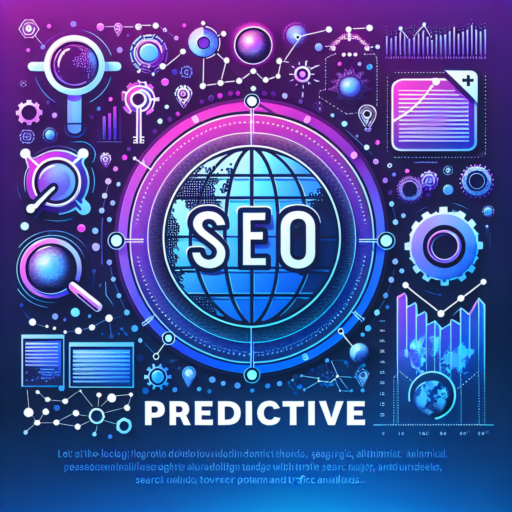What is Predictive SEO and How Does It Work?
Predictive SEO is an innovative approach that utilizes advanced algorithms and data analytics to forecast future trends in search engine optimization. By analyzing vast amounts of historical data, user behavior, and keyword performance, Predictive SEO helps businesses anticipate which topics and keywords will drive traffic and engagement in the coming months. This proactive strategy enables companies to refine their content and marketing efforts, ensuring they remain ahead of the competition in a constantly evolving digital landscape.
How Predictive SEO Functions
The foundation of Predictive SEO lies in its ability to analyze multiple data sources. Key components of this process include:
- Data Analysis: By processing historical search data, Predictive SEO identifies patterns and trends that can indicate future search queries.
- User Behavior Insights: Understanding user intent and behavior through analytics tools allows for more tailored keyword targeting.
- Machine Learning Models: These models utilize historical data to improve the accuracy of predictions, enabling more effective SEO strategies.
Once the data has been analyzed, SEO specialists can create targeted content strategies that align with anticipated user needs. For instance, if data indicates a rising interest in a specific topic, businesses can produce relevant content beforehand, ensuring they capture traffic as the interest grows. This forward-thinking approach not only boosts visibility in search engines but also enhances user engagement and satisfaction through timely and relevant content delivery.
Benefits of Implementing Predictive SEO Strategies
Implementing predictive SEO strategies provides businesses with a competitive advantage, allowing them to anticipate trends and adapt their content accordingly. By leveraging data analytics and machine learning, companies can gain insights into consumer behavior, search patterns, and emerging keywords, making it easier to align their digital strategies with market demands.
Enhanced Keyword Optimization
One of the primary benefits of predictive SEO is enhanced keyword optimization. Businesses can identify high-intent keywords that are likely to drive traffic in the future. This proactive approach not only improves current rankings but positions content strategically for upcoming trends. By focusing on keywords before they peak in popularity, companies can establish authority and capture audience interest early.
Improved Content Development
Predictive SEO also streamlines the content development process. By understanding what topics are set to trend, businesses can create targeted content that addresses consumer needs before they arise. This not only saves time but also ensures that content remains relevant, engaging, and capable of ranking higher in search results. Regularly updating content based on predictive analysis can also rejuvenate older pages, keeping them fresh and in line with current user intent.
- Increased Organic Traffic: Anticipating search engine trends leads to higher visibility and organic traffic.
- Higher Conversion Rates: Tailoring content to predicted search behavior can significantly boost conversion rates.
- Better Resource Allocation: Businesses can allocate resources more effectively by focusing on high-potential strategies.
Moreover, predictive SEO strategies foster greater alignment between marketing efforts and overall business goals. By using data-driven insights, teams can devise more effective promotional campaigns that resonate with their target audience. As a result, businesses not only enhance their online presence but also build stronger relationships with consumers who feel understood and valued.
How Predictive SEO Can Enhance Your Content Marketing Efforts
Predictive SEO is revolutionizing the way businesses approach content marketing by leveraging data-driven insights to forecast trends and consumer behaviors. By analyzing historical data and search patterns, marketers can identify potential topics and keywords that are likely to resonate with their target audience. This proactive approach allows brands to create tailored content that meets user intent even before the ideas become mainstream.
Utilizing predictive SEO, companies can enhance their content marketing strategies in several ways:
- Targeted Keyword Identification: By anticipating emerging trends, predictive SEO helps in pinpointing high-potential keywords to optimize content.
- Content Topic Generation: Predictive tools can analyze competitors and audience interests, leading to innovative content ideas that captivate users.
- Optimized Timing for Content Release: Knowing when to publish content based on predicted interest trends can maximize visibility and engagement.
- Improved Audience Understanding: Insights derived from predictive analytics can yield a clearer picture of audience preferences and behaviors, enabling more personalized content marketing.
By incorporating predictive SEO into their content marketing strategy, businesses not only boost their chances of ranking higher on search engines but also enhance the overall user experience. This data-centric method enables brands to stay ahead of the competition and foster deeper connections with their audience through relevant and timely content. As the digital landscape continues to evolve, the integration of predictive SEO will become a vital component of successful content marketing initiatives.
Top Tools and Techniques for Effective Predictive SEO
In the rapidly evolving world of SEO, leveraging predictive analytics is crucial for staying ahead of the competition. Predictive SEO allows marketers to anticipate search trends and user behavior, leading to more strategic content creation. Here are some of the top tools and techniques that can help you harness the power of predictive SEO.
Tools for Predictive SEO
- Google Trends: This tool helps you understand the popularity of search queries over time and can indicate rising trends that may influence your SEO strategy.
- Ahrefs: A robust tool for backlink analysis and keyword research, providing insights into potential opportunities that can boost your rankings through predictive analysis.
- SEMrush: Offers features like keyword gap analysis and traffic analytics to predict competitors’ strategies and track performance fluctuations.
- MarketMuse: Utilizes AI to predict content performance and identify content gaps, allowing you to create high-value articles that are more likely to rank well.
Techniques to Implement
Utilizing the right tools is only part of the equation; effective techniques are also essential. Here are some methods to enhance your predictive SEO efforts:
- Keyword Forecasting: Analyzing historical keyword data to predict future performance trends, helping you select keywords that are likely to gain traction.
- User Behavior Analysis: Monitoring user engagement metrics such as dwell time and bounce rate can inform content optimization and predicting user intent more accurately.
- Content Gap Analysis: Identifying gaps in your current content strategy allows you to anticipate new opportunities and create content that meets emerging user needs.
- Seasonal Trends Identification: Understanding cyclical trends in your target market can help you prepare content in advance for peak search periods.
Future Trends in Predictive SEO: What to Expect
The digital landscape is constantly evolving, and Predictive SEO is no exception. As search engines incorporate more advanced algorithms, the ability to anticipate user intent will shape the future of search engine optimization. One prominent trend is the rise of machine learning and artificial intelligence, which will allow marketers to analyze vast amounts of data more efficiently, identifying patterns and predicting search behavior with greater accuracy.
Enhanced User Experience
Future predictive SEO strategies will focus heavily on enhancing user experience. Search engines will prioritize websites that not only provide relevant content but also deliver seamless interactive experiences. Factors such as page load speed, mobile optimization, and user engagement metrics will play a pivotal role in ranking algorithms. As a result, optimizing for user experience will become crucial for brands aiming to stay competitive.
Voice Search Optimization
With the increasing prevalence of voice-activated devices, optimizing for voice search will be essential. Predictive SEO will shift towards understanding conversational language and natural phrases users employ when seeking information through voice search. Keywords will evolve, favoring longer phrases and questions instead of traditional keyword strategies. Brands that adapt their content to cater to voice search will likely see a significant boost in their visibility.
Personalization and Localization
Another key trend in predictive SEO will be increased personalization and localization. Search engines are becoming more adept at providing personalized search results based on individual user preferences, behavior, and location. This shift means that businesses must tailor their SEO strategies to cater to local audiences while utilizing customer data to deliver highly relevant content. Trends like hyper-local SEO will gain traction, driving brands to engage with their community and optimize their online presence accordingly.




